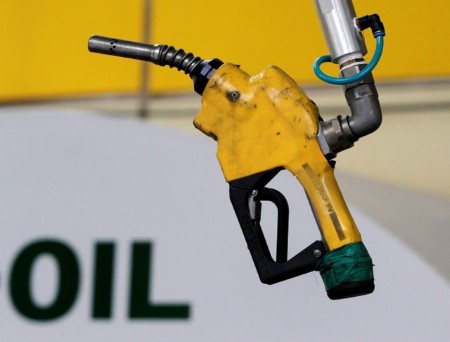




Monthly Economic Update: Fed catches up
 DOWNLOAD
DOWNLOAD

Inflation Update: Steady and mellow
 DOWNLOAD
DOWNLOAD

Philippines Trade Update: Growing exports lead to stronger trade balance
 DOWNLOAD
DOWNLOAD


Oil prices up after Basra spill, but log weekly decline

NEW YORK, Sept 16 (Reuters) – Oil prices rose slightly on Friday as a spill at Iraq’s Basra terminal appeared likely to constrain crude supply, but remained down on the week on fears that hefty interest rate increases will curb global economic growth and demand for fuel.
Brent crude futures settled at $91.35 a barrel, up 51 cents, while U.S. West Texas Intermediate (WTI) crude futures settled at $85.11 a barrel, up 1 cent.
Both benchmarks were down by nearly 2% on the week, hurt partly by the U.S. dollar’s strong run, which makes oil more expensive for buyers using other currencies. The dollar index was largely flat on the day but up for its fourth week in five weeks.
In the third quarter so far, both Brent and WTI are down about 20% for the biggest quarterly percentage declines since the start of the COVID-19 pandemic in 2020.
Oil exports from Iraq’s Basra oil terminal are being gradually resumed after they were halted last night due to a spillage, which has been contained, Basra Oil Company said.
The spill at the port, which has four loading platforms and can export up to 1.8 mln barrels per day, drove up prices on the prospect of lower global crude supply.
“That definitely threw a scare into the market because the initial report was that those barrels were going to be out of the market for some time,” said John Kilduff, partner at Again Capital LLC in New York.
Investors are bracing for a large increase to U.S. interest rates, which could lead to a recession and reduce fuel demand. The Federal Reserve is widely expected to raise its benchmark overnight interest rate by 75 basis points at a Sept. 20-21 policy meeting.
“The increasing likelihood of global recession, as underscored by the recent renewed downturn in equities could continue to provide a limiter of upside (oil) price possibilities into next month and possibly beyond,” Jim Ritterbusch of Ritterbusch and Associates said in a note.
The market also was rattled by the International Energy Agency’s outlook for almost zero growth in oil demand in the fourth quarter owing to a weaker demand outlook in China.
“Both the IMF and World Bank warned that the global economy could tip into recession next year. This spells bad news for the demand side of the oil coin and comes a day after the IEA forecast (on) oil demand,” said PVM analyst Stephen Brennock.
“Recession fears coupled with higher U.S. interest rate expectations made for a potent bearish cocktail.”
Other analysts said sentiment suffered from comments by the U.S. Department of Energy that it was unlikely to seek to refill the Strategic Petroleum Reserve until after the 2023 financial year.
On the supply side, the market has found some support on dwindling expectations of a return of Iranian crude as Western officials play down prospects of reviving a nuclear accord with Tehran.
Oil prices could also be supported in the fourth quarter if OPEC+ members cut production, which will be discussed at the group’s October meeting. Europe faces an energy crisis driven by uncertainty on oil and gas supply from Russia.
U.S. crude supply appeared headed for an increase, as energy firms this week added oil and natural gas rigs for the first time in three weeks as relatively high crude prices encouraged some firms to drill more, mainly in the Permian Basin, according to energy services firm Baker Hughes Co.
(Additional reporting by Shadia Nasralla in London, Gertrude Chavez in New York, Sonali Paul in Melbourne and Emily Chow in Singapore; Editing by David Goodman, Louise Heavens, Paul Simao, David Gregorio and Diane Craft)
This article originally appeared on reuters.com





 By Reuters
By Reuters